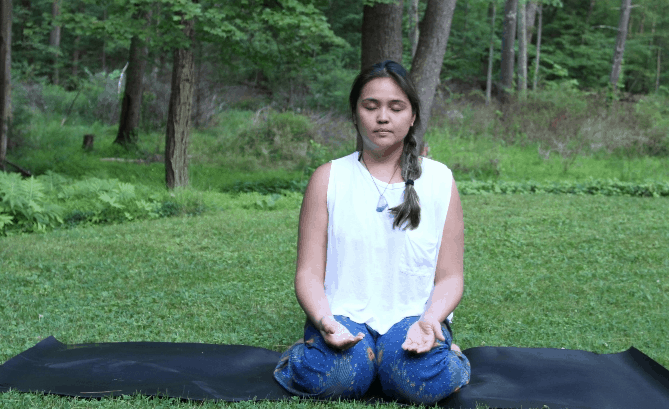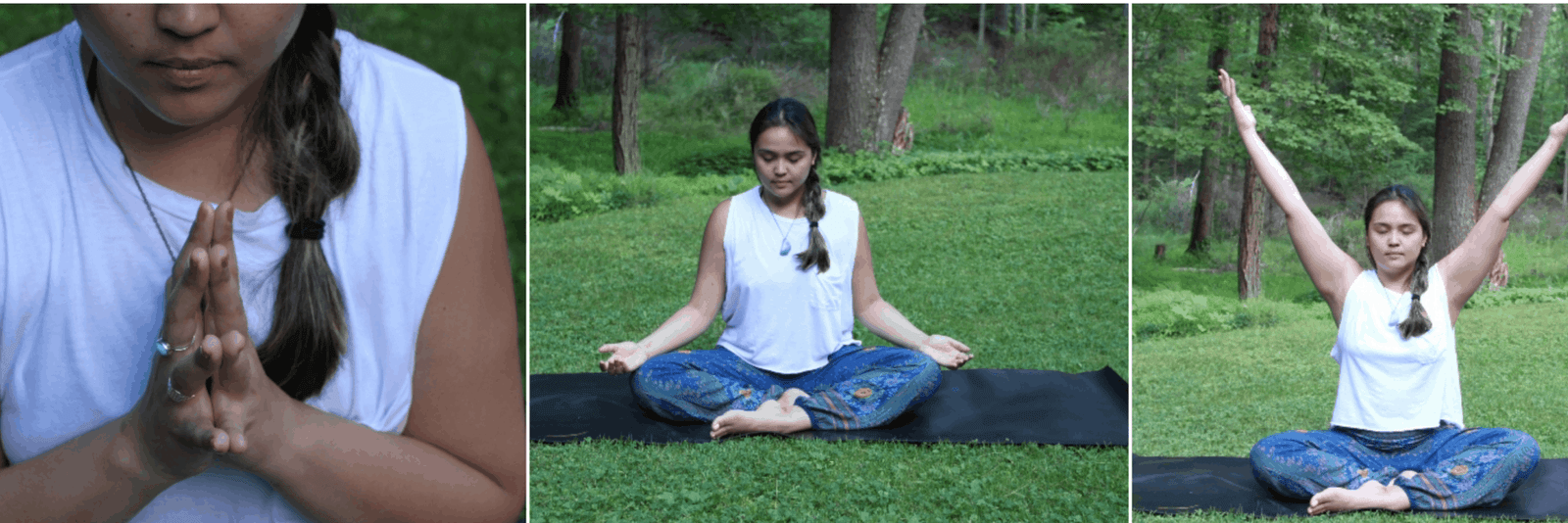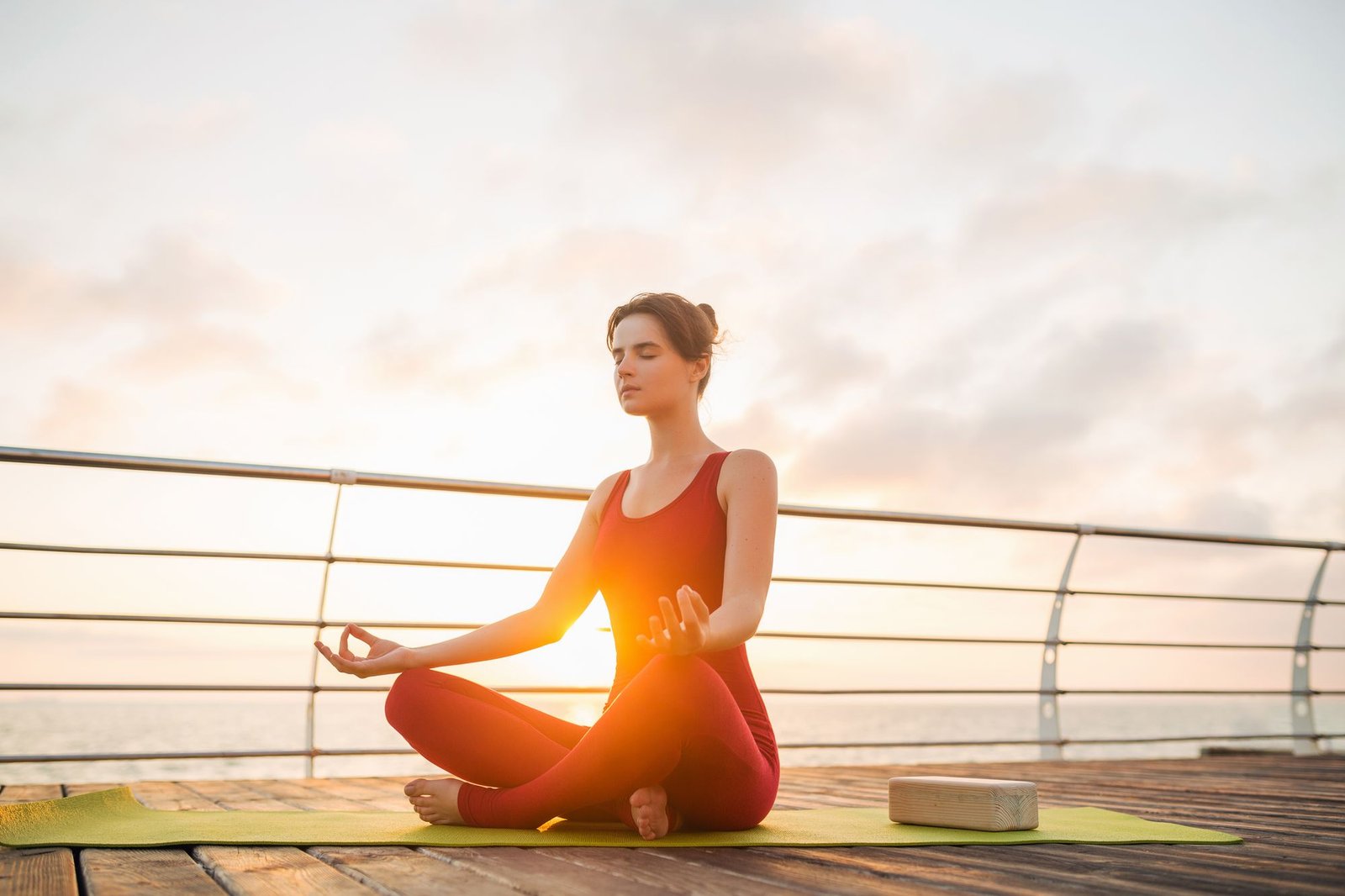Introduction
Many yogis are eventually attracted to meditation, and vice versa. That’s because yoga itself is a form of moving meditation—your body and breath are in harmony to create a physical, meditative experience. And if you’re a meditator to begin with, you may find there’s some overlap there with yoga, including some familiar poses.
So what are the best meditation poses for yoga? There are plenty of choices—whether you like sitting in a chair or getting cozy in lotus pose on your mat. The important thing is to choose a position that is comfortable for your body and allows you to keep good posture with a long, aligned spine.
Why Meditation Is So Popular
These days, more people are turning to holistic tools to handle stress—think yoga, plant medicine, and of course, meditation. Whether you’re new to meditating or have been practicing for a while, you’ve probably heard about the many ways it benefits your body and mind.
Some of the proven benefits of meditation include:
- Lowering anxiety and depression
- Boosting self-awareness and mindfulness
- Creating a sense of calm and inner peace
- Reducing overall stress
- Increasing your energy levels
Getting Underway with Meditation
Meditation is a great addition to your health and wellness regimen. Indeed, meditation studios are becoming as common as the doughnut shop, and many yoga studios also offer guided meditation classes now.
You can do it on your own at home or take a class—it’s completely your choice. When you’re beginning, sit in a quiet, serene area for a couple of minutes a day. As time passes, you can prolong the duration of your sessions as your practice becomes more profound. And if you require some directions, apps and YouTube tutorials can be very helpful.
Discovering Various Forms of Meditation
With so many advantages, it comes as no surprise that meditation is becoming increasingly popular. But with so many types, how do you pick the right one? Similar to yoga, meditation has numerous forms—some rely on breathing, others utilize mantras or visualization. As a beginner, try sampling a few and see what suits you best.
Here are some trendy types of meditation:
- Guided Meditation: A teacher or recording leads you through the meditation with words and imagery. It’s excellent for relaxation and stress relief.
- Mindful Meditation: Works on observing your breath and monitoring your thoughts without criticism. It’s particularly beneficial for lessening anxiety.
- Mantra Meditation: Consists of repeating a word or phrase (usually in Sanskrit) that possesses certain energy and meaning. It’s an intense practice with rich spiritual history.
- Sound Meditation: Utilizes calming sounds such as crystal bowls or gongs to keep you present. These tend to be combined with breathwork or guided instruction and are becoming more popular.
Having Trouble Sitting Still? Here’s How to Sit for Longer
If your legs ever got numb or your back began to hurt during meditation, you’re not alone. Discomfort and distracting thoughts are a couple of reasons that people tend to shorten their practice.
So, how do you condition your body and mind to sit longer? It requires patience, consistency, and a bit of strategy.
Tips for a More Comfortable Meditation Practice
Want to get more comfortable and meditate for longer? Here are some tips to help:
- Use props: Don’t be shy about grabbing a blanket, block, or cushion. A bit of support can make a big difference in how long you sit.
- Choose the correct pose: Everybody’s body is unique. If one doesn’t sit or stand well, switch to another—such as sitting in a chair, on the ground, or even on a bed.
- Be present with your breath: As soon as your mind begins to stray, gently remind yourself to focus on your breathing. It will anchor you in the moment.
- Set an intention: Before you start, determine what you’re hoping to gain from your practice. Whether it’s peace, clarity, or stress release, intentions can assist in keeping your attention grounded.
- Join a group class: Meditating around others has been shown at times to be inspiring and helpful. Experiment with several studios or instructors to find what works for you.
Best Yoga Poses for Meditation
No single pose fits all people when it comes to meditation. Some require more support in the hips or back, while others prefer a deeper stretch. Experiment with different poses and find those that help you feel grounded, in alignment, and comfortable.

Hero Pose (Virasana)
This seated position is excellent for stretching the thighs, knees, and ankles. It makes your feet strong and allows you to sit up straight with a long spine. Just watch out if you have knee or ankle problems—props can be a lifesaver here.
How to do it:
- Sit on knees together with heels together.
- Lift hips and space heels apart. Lower sit bones between heels.
- Keep toes pointing directly back and knees in line.
- Place your hands on your knees, spine erect, core active.
- Tuck in your chin and roll back your shoulders to expand your chest.
Tips:
- If your hips aren’t reaching the ground, sit on a block.
- Use a blanket under your ankles if they’re tight.
Lotus Pose (Padmasana)
Lotus pose is the iconic meditation pose, but it takes time and flexibility to master. It deeply opens the hips and ankles, so start with quarter or half lotus if you’re not quite there yet.

Quarter Lotus:
- Sit cross-legged, with ankles crossed rather than stacked.
Half Lotus:
- Start with legs straight in front.
- Bend one knee, open the hip, and rest the foot on the opposite thigh.
- Cross the other leg underneath, like quarter lotus.
- Sit tall and release your shoulders.
Full Lotus:
- Take half lotus steps on either side, crossing the shins and keeping the feet close to your belly.
- Maintain straight spine and relaxed shoulders.
Tips:
- Don’t rush—do each stage slowly.
- Alternate which leg comes on top in order to maintain balance in your body.
Easy Pose (Sukhasana)
This is an excellent beginner position—supportive and relaxed for extended sits. It opens your hips, ankles, and knees and develops strength in your upper back.
How to do it:
- Sit on your mat and cross your legs with each foot under the opposite knee.
- Root down through your sit bones.
- Lengthen your spine, relax your shoulders, and soften your hands on your knees.
Tip: Use a wall for support if needed.
Other Comfortable Options
Don’t feel restricted to sitting on the floor. Some individuals like meditating in a chair or reclining in Savasana. The important thing is to remain relaxed yet alert. If Savasana causes you to become too drowsy, try a seated position. If sitting in a chair, use one with no arms and place your feet flat on the floor.
Hand + Arm Positions for Meditation

Your fingers can hold various positions (referred to as mudras) when meditating, based on what you wish to work on. These symbolic finger positions are derived from Hindu and Buddhist practices and can be used to direct energy in your practice.
Experiment with various mudras to determine which resonate for you and that session’s purpose.
Common Mudras and Options:
- Prayer Hands: Place palms together at your heart center, fingers relaxed and slightly separated.
- Palms Up: Rest hands on knees, palms up, fingers loose.
- V Arms: Raise arms over your head in a V-shape, palms towards the center. Sense the energy flowing from your fingertips.
- Dhyana Mudra: Hands in lap, one on top of the other, thumbs lightly touching.
- Chin Mudra: Index finger and thumb touch, other fingers loose, palms up on knees.
- Lotus Mudra: Pinkie and thumb touch, other fingers spread wide like an opening flower in front of the heart.
FAQs
Do I need a meditation cushion?
Nah! Cushions are nice to have, but not necessary. You can sit on a block, folded blanket, or even a chair—whatever supports you best.
How firm should I press in a mudra?
Mudras must feel relaxed—only as much contact as it takes to make the shape, without tension. Hands must be kept soft and relaxed holding the mudra.

Leave a Reply